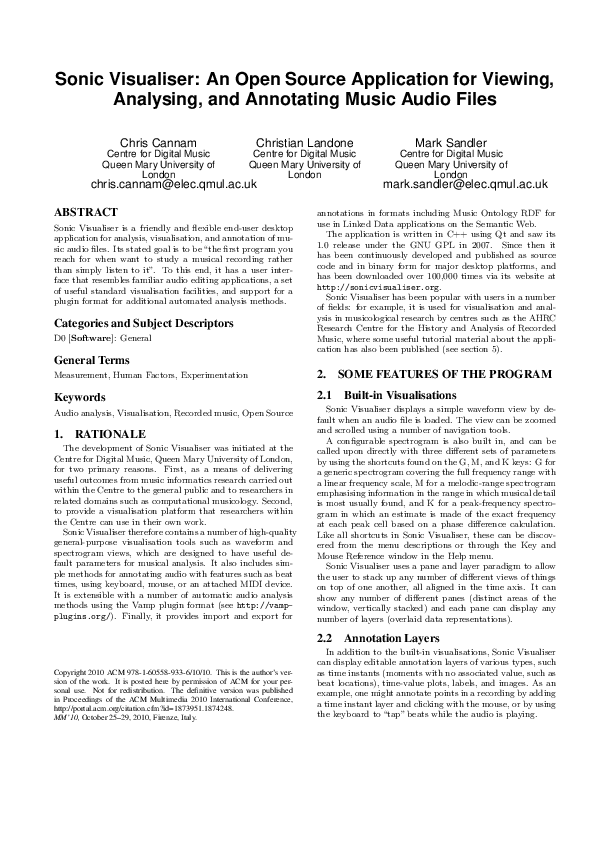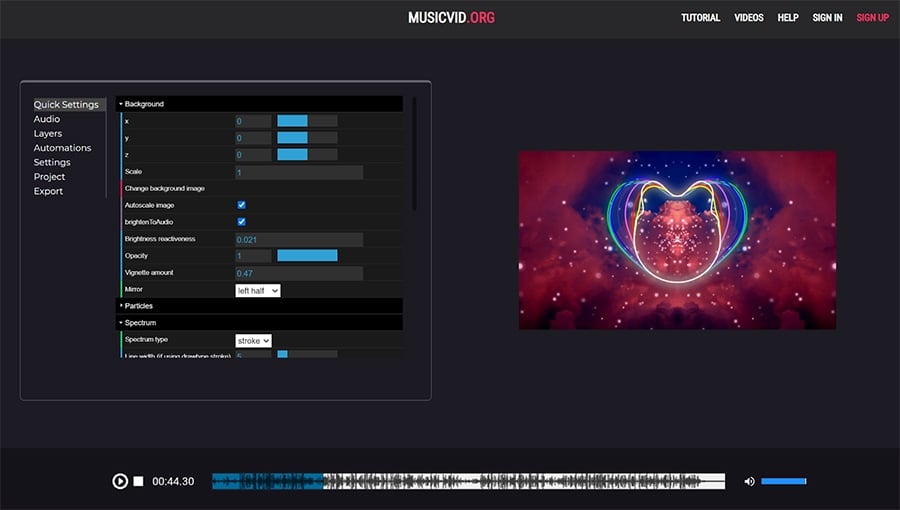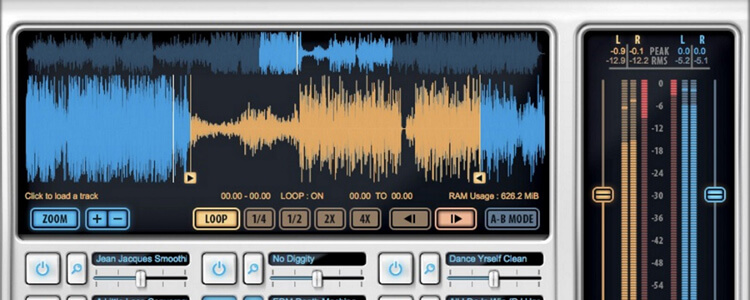
- #Visualizer program for audio files how to
- #Visualizer program for audio files update
- #Visualizer program for audio files code
- #Visualizer program for audio files license
You can also generate images that might give you a better understanding of the sound you're working with.

It can help make your apps more accessible if you use it correctly. Working with audio on the web can be an interesting way to provide data to users.
#Visualizer program for audio files code
If you want to take a look at this working, you can check out this Code Sandbox or you can get the code from the audio-visualizer folder in this repo. If you hit the right arrow key, you'll get an image that looks similar to this. You should see something like this in your browser now. That's it! All that's left is to refresh the browser and make sure your mic permissions are adjusted. It'll be a png file named canvasSnapshot. Right now, if a user presses the right arrow key, a snapshot of the visualization will be downloaded to their device.
#Visualizer program for audio files update
Just make sure you update the ke圜ode value. I chose the right arrow, but you can feel free to change this to any other key. Take a look through their docs if you want to learn more. This is one of the ways you can interact with P5. Below the setup method we just defined, add this code. Since we have the setup ready to go, we need to define what should be drawn in the canvas. This is important for our visualizer to account for different pitches it picks up through the mic. Next, we create an fft object that we use to handle the input from the mic. Because most browsers don't let you automatically start recording a user's mic, we have to add the line to resume listening. Then we'll call mic.start to get the mic to start listening for sound. We'll grab our mic input object with the AudioIn method. We decide it shouldn't have any kind of fill in the canvas. It creates a new canvas with the width and height we defined. Then we define what P5 should do on setup. Then we define a few variables to hold a value for our mic, to handle some fft operations, and to create the canvas element. We start by taking the current instance of P5 as a variable called p. So in the element, add the following code after the tag. We're going to go straight to the index.html and add a couple of script tags with links to the P5 files we need.

We're going to import the P5 libraries now, but we won't do it using npm or yarn.
#Visualizer program for audio files how to
P5 is a little tricky to get working in React and it took me a few different tries to figure out how to get this working. That's why we're going to be working with JavaScript files even though I usually work with TypeScript. I ran into issues where it kind of worked, but it also kind of didn't. We'll start by importing a few JavaScript libraries.īefore we get started, I just want to note that if you're following along with TypeScript, you might run into some issues with the P5 sound library. These are Linux-native formats, though Sonic Visualiser can use them on any platform if you can find the plugins.

Effects plugins: Sonic Visualiser can use LADSPA and DSSI effects plugins. No plugins are included with Sonic Visualiser itself. This is where we'll be focused since everything we're doing is on the front-end. Dont forget your plugins Analysis plugins: Oh yes, youll want some of those. The web directory holds all of the code for the React app. This is where you'll define the models for your database and the types and resolvers for your GraphQL server. The api directory is where you will handle all of your back-end needs. The main two directories you'll work in are the api and web directories.

This will generate a lot of files and directories for you. Sonic Visualiser is an impressive free tool for musicians that will aid music learning and analysis of audio files.Enter fullscreen mode Exit fullscreen mode
#Visualizer program for audio files license
Unfortunately though, Sonic Visualiser cannot support VST plugins directly because Steinberg's VST license is incompatible with Sonic Visualiser's GPL license although both Mac and Windows users can get support using the Audacity VST Enabler. It can load audio files in WAV, Ogg and MP3 formats, view their waveforms in spectrograms and allows you to annotate audio data by adding time points and markers. Although its free, Sonic Visualiser is very powerfu. Sonic Visualiser can use LADSPA and DSSI effects plugins and Windows users are at a slight advantage over Mac users as they can download some LADSPA plugins from the Audacity plugin page.


 0 kommentar(er)
0 kommentar(er)
